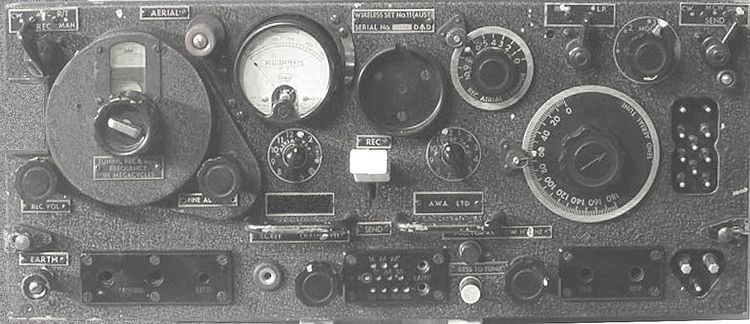 | ||
The wireless set No. 11 was a wireless radio transceiver used by the British Army during World War II.
Contents
History
The No. 11 set, a radio transceiver featuring a single tuning unit, was designed in 1938 to replace the 1933 No. 1 wireless set. Originally designed to be used in tanks for short and medium range communications, it was later used by the Long Range Desert Group in Libya and Tunisia for long range communications while deep behind enemy lines. The Germans reportedly "captured several sets in France" and put them to use for their own communication needs. The set was also manufactured in Australia by AWA with different valves and alterations to its circuitry.
Specifications
References
Wireless set No. 11 Wikipedia(Text) CC BY-SA
